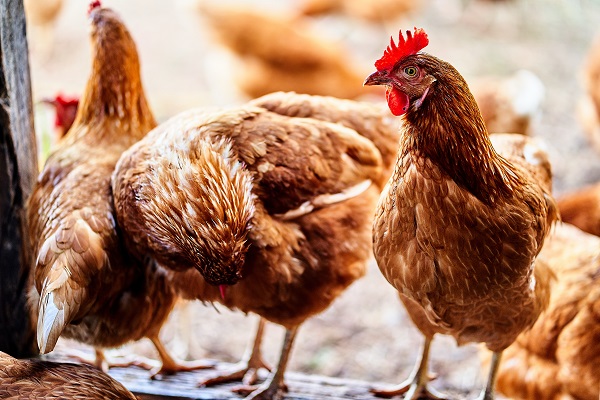
In America we think of chickens as a simple-minded bird that we keep for their eggs or that we eventually eat, but throughout history, the chicken has played a major role in religion and mythology. Here are just a few examples.
In Indonesia the chicken has great significance during the Hindu cremation ceremony. A chicken is considered a channel for evil spirits which may be present during the ceremony. A chicken is tethered by the leg and kept present for the duration of the ceremony to ensure that any evil spirits present during the ceremony go into the chicken and not the family members present. The chicken is then taken home and returns to its normal life.
In ancient Greece, the chicken was not normally used for sacrifices, perhaps because it was still considered an exotic animal. Because of its valor, the cock is found as an attribute of Ares, Heracles, and Athena. The alleged last words of Socrates as he died from hemlock poisoning, as recounted by Plato, were “Crito, I owe a cock to Asclepius; will you remember to pay the debt?”, signifying that death was a cure for the illness of life.
The Greeks believed that even lions were afraid of cocks. Several of Aesop’s Fables reference this belief.
In the New Testament, Jesus prophesied the betrayal by Peter: “Jesus answered, ‘I tell you, Peter, before the rooster crows today, you will deny three times that you know me.’” (Luke 22:34) Thus it happened (Luke 22:61), and Peter cried bitterly. This made the cock a symbol for both vigilance and betrayal.
Earlier, Jesus compares himself to a mother hen when talking about Jerusalem: “O Jerusalem, Jerusalem, you who kill the prophets and stone those sent to you, how often I have longed to gather your children together, as a hen gathers her chicks under her wings, but you were not willing.” (Matthew 23:37; also Luke 13:34).
In many Central European folk tales, the devil is believed to flee at the first crowing of a cock.
In traditional Jewish practice, a kosher animal is swung around the head and then slaughtered on the afternoon before Yom Kippur, the Day of Atonement, in a ritual called kapparot. A chicken or fish is typically used because it is commonly available (and small enough to hold). The sacrifice of the animal is to receive atonement, for the animal symbolically takes on all the person’s sins in kapparot. The meat is then donated to the poor. A woman brings a hen for the ceremony, while a man brings a rooster. Although not actually a sacrifice in the biblical sense, the death of the animal reminds the penitent sinner that his or her life is in God’s hands.
The Talmud speaks of learning “courtesy toward one’s mate” from the rooster. This might refer to the fact that when a rooster finds something good to eat, he calls his hens to eat first.
Did You Know
It is thought that the nearest relative of the Tyrannosaurus rex is a chicken.
Chickens will be less ‘flighty’ if while tending a pen or chicken house the caretaker walks backwards.
You can literally hypnotize a chicken by holding it and drawing a line in the dirt over and over. The chicken will stay still right there as long as you do this.
Some breeds of chickens can lay colored eggs.
The average hen lays 265 table eggs each year.
A chicken’s gizzard will likely have gravel to help “chew” the food for digestion.
Related Articles & Free Email Newsletter Sign Up
How to Keep Rats Away From Your Poultry
The 4 Signs of Healthy Chickens




Comment here